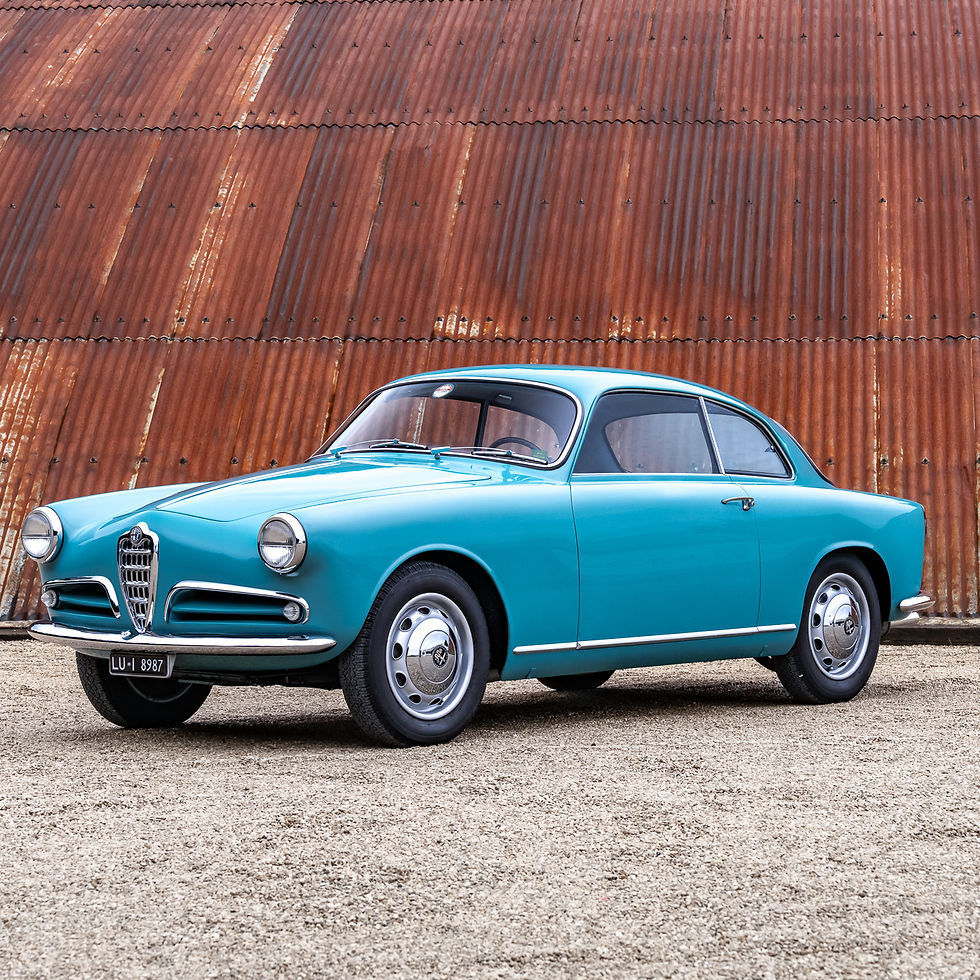In 1953, Mercedes-Benz told its American importer Max Hoffman of its plans to build a roadster based on the pontoon sedan. Hoffman didn't see the point unless the model was as similar as possible to the spectacular 300 SL "butterfly doors". It was finally decided to offer a roadster prototype at the 1954 New York show. The development of the roadster was extremely rapid. The first sketches were ready after only two weeks, followed by a model after four weeks, a 1:5 model after twelve weeks and a 1:1 wooden model after twenty weeks. After a total of 150 days, the prototype itself was on display at the New York Auto Show! But the operation could never have gone so fast without a few tricks of the trade. The new roadster borrowed as many parts as possible from the Mercedes 180, including the chassis, which was simply shortened to form a self-supporting construction with the body.
The Mercedes-Benz 190SL was presented in February 1954 at the New York Motor Show as a prototype. With this model, the German brand wanted to capture a share of the booming roadster market in the USA.
The response to the New York show was so enthusiastic that Mercedes-Benz decided to go into series production. The 190 SL made its official debut at the 1955 Geneva Motor Show, where it was presented in three versions: a convertible A (the name traditionally used by Mercedes-Benz for its two-seater convertibles at the time), a coupe with a removable roof ('hard top') and a coupe-cabriolet equipped with both a removable roof and a canvas top. Since Mercedes-Benz felt that its 190 SL was already generously equipped, it designed a deliberately short option list. Buyers could still customize their car with leather upholstery and a custom luggage set, tires with white sidewalls, a passenger-side exterior mirror, and fog lights. But the most popular accessory was definitely the Becker radio. The interior was also tastefully finished: the metal dashboard was painted in the body color, while the top and bottom were covered with the same fabric as the seats. The feature that everyone really agreed on, however, was the beauty of the design, which was irresistibly reminiscent of the 300 SL. The 190 SL had a certain sex appeal and would play a role in many movies of the time.
Compared to the 1954 prototype, the production car has the gearshift lever on the floor instead of on the steering wheel. The latter solution would have cost less but would not have pleased the American customers. The production 190SL also lacks the hood-mounted air intake of the prototype.
The Mercedes-Benz 190SL is meant to be a dynamic car while offering the seriousness of a Mercedes-Benz. However, the manufacturer made the mistake of presenting the car as a sports car. It is not really the case, and the critics arrived. The gear ratio was quickly shortened to give the car a little more character. Despite this lack of sportiness, the car was a success and the public liked the civilized character of the 190SL.
Although the letters SL stand for "Sport Leicht" or light sport, the public quickly perceives that, after the 300SL which is a racing car adapted to the road, the 190 SL is more a touring car, fast and comfortable, allowing to swallow long distances without difficulty. This philosophy is fully reflected in the following generations of SL, which then become luxury cars.
The car was not equipped with a 6-cylinder engine like the 300 SL but with a more sober and modern four-cylinder engine of 1,897 cm3. The engine, equipped with two Solex carburetors, finally developed 105 hp at 5,700 rpm. It was coupled to a 4-speed mechanical gearbox. This set, without allowing a sporting temperament, ensures a good dynamism to the car. The line is aesthetically close to the 300 SL, but it is now a two-seater convertible.
The popular 190SL had a long career, so much so that it achieved its second-best production year in 1960, five years after its launch. The 190SL was produced in 26,000 units.
The SL W113 Pagoda succeeded it in the spring of 1963 and was placed higher up the range thanks to its 6-cylinder engine.
In spite of an initial design not very sporty, the 190SL was available on request in a single-seater version with aluminum doors without windows, without handles with a tonneau cover and Plexiglas windscreen. Thus, Mercedes-Benz 190SL were entered privately in some races. The factory also entered a 190SL with a fuel-injected engine in the 1955 Mille Miglia race. A 190SL won the 1958 Hong Kong Rally, and in 1959 a private crew fitted an OM621 diesel engine with 60 hp in a 190SL. It set a new 24-hour record on the Hockenheim circuit at an average speed of 124.1 km/h.
Our car, registered in 1959, is presented in a splendid grey coat accompanied by a cartier red interior with a superb patina and the highly desirable Becker car radio option. The car is accompanied by its Hard top and benefited from a careful restoration many years ago before its purchase by the current owner in 2002. The previous owner had cherished it since 1995. You will find in this car all the charm and elegance of the model. It is in very good condition, both aesthetically and mechanically, having been meticulously maintained, as evidenced by the impressive file of invoices accumulated over the 50,000km the owner has driven it. It's sure to delight fans of this iconic roadster, and will accompany you on all your travels with grace and suppleness.


































































